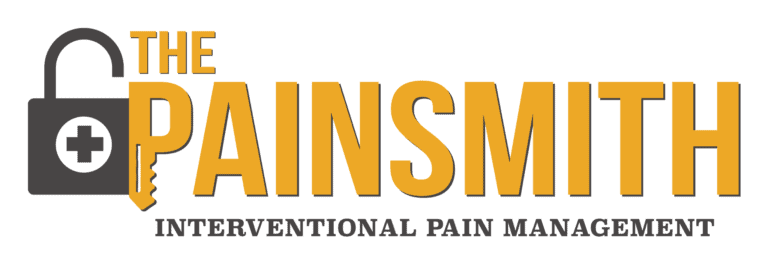Abdominal pain is extremely common. It is something that almost everyone will experience at some point. The severity and causes of the pain are wide ranging, encompassing anything from a mild temporary stomachache to severe, ongoing pain. Although for most people, abdominal pain is a mere annoyance that resolves on its own, in some cases, it can be a warning sign of something more serious.
Understanding the symptoms, potential causes of abdominal pain and treatment options can ensure you are not suffering with pain for longer than necessary. For frequent, debilitating, or severe pain, diagnosis is key. There are many causes and many treatment options, from OTC medication to surgical procedures. If your abdominal pain progresses into chronic pain, The PainSmith may have treatments that can help, or we can work with your diagnostic team to help manage pain while you seek treatment. In this blog post, Dr. Smith identifies the different types, potential causes, and treatment options for abdominal pain.

Types of Abdominal Pain
Your abdominal pain can present in different ways and in different locations. It may feel:
- Mild or severe
- Dull or sharp
- Burning or achy
- Crampy or colicky
- Constant or intermittent
- Localized (in one spot) or generalized (all over)
The location of your pain can also differ and will help your doctor identify potential causes:
- Upper left abdomen: Heart attack, hiatal hernia, shingles or spleen infection
- Lower left abdomen: Crohn’s disease, diverticulitis, ulcerative colitis or kidney stones
- Upper right abdomen: Cholangitis (inflammation of the bile duct), fecal impaction (hardened stools), hepatitis or peptic ulcer
- Lower right abdomen: Stomach flu, cholecystitis (inflammation of the gallbladder), ovarian cyst or appendicitis
- General: Appendicitis, Crohn’s disease, urinary tract infection or irritable bowel syndrome
- Upper abdomen: Pancreatitis, heart attack, GERD or gallstones
- Middle abdomen: Intestinal blockage, pancreatitis, appendicitis or thoracic aortic aneurysm
- Lower abdomen: Diverticulitis, ectopic pregnancy, appendicitis or inflammation of the fallopian tubes (salpingitis)
Additionally, the level of pain a person experiences does not always reflect the severity of the condition causing it. It’s important to know when to seek medical care.
We recommend seeking immediate medical attention for severe pain that develops suddenly.
For more moderate levels of pain, patients should visit their doctors when the pain is:
- New
- Disrupting daily activities
- Worsening over time
Causes of Abdominal Pain
Abdominal pain can be caused by a very wide range of conditions and disorders. Although many people just think of the stomach when you experience abdominal pain, the pain could be coming from other organs such as the:
- Pancreas
- Liver
- Gallbladder
- Small intestine
- Large intestine
The pain can also be in your abdominal wall, the skin and muscles that make up the outer shell of your abdomen. The pain that you feel in your belly may even be coming from somewhere else, like your chest, pelvis or back, but you are feeling it more in your abdomen.
Possible causes of acute or chronic abdominal pain include:
- Abdominal aortic aneurysm
- Appendicitis
- Bowel blockage
- Cancer of the stomach, liver, or other organs
- Cholecystitis, with or without gallstones
- Constipation
- Diverticulitis
- Food allergies or food poisoning
- Gastroesophageal reflux disease (GERD), heartburn, or indigestion
- Inflammatory bowel disease (IBD), including Crohn’s disease and ulcerative colitis
- Interstitial cystitis
- Irritable bowel syndrome (IBS)
- Kidney stones
- Muscle Strain
- Pancreatitis
- Pelvic inflammatory disease (PID)
- Ruptured ovarian cyst
- Severe menstrual cramps
- Stomach flu
- Tubal (ectopic) pregnancy
- Ulcers
- Urinary tract infections (UTI)
Testing for Abdominal Pain
When attempting to diagnose your abdominal pain, your doctor may order urine, blood and stool tests. Imaging tests are also helpful for detecting abnormalities inside your gastrointestinal system and other organs. These tests may include:
- Barium enema
- CT scan
- Colonoscopy or sigmoidoscopy (tube through the rectum into the colon)
- Electrocardiogram (ECG) or heart tracing
- Ultrasound of the abdomen
- Upper endoscopy (tube through the mouth into the esophagus, stomach and upper small intestine)
- Upper GI (gastrointestinal) and small bowel series
- X-rays of the abdomen
How to Treat Abdominal Pain
Once the condition causing the abdominal pain is diagnosed, treatment options will be decided based on the underlying cause and severity of the pain.
Treatment may start with conservative therapies, like over-the-counter pain relievers, heating pads, and bed rest. Your doctor may also recommend diet modifications such as drinking plenty of water, eating more of certain foods such as fiber, avoiding certain foods, and using antacids.
If your abdominal pain is chronic and your medical team feels like you are a good candidate for interventional pain therapies, The PainSmith has several pain management options available, such as:
- Peripheral Nerve Blocks
- Sympathetic Nerve Blocks
- Spinal Cord Stimulation (SCS)
When to Seek Professional Help for Abdominal Pain
While it’s true that some abdominal pain may resolve on its own, severe or persistent pain is a serious issue. Ignoring abdominal pain can lead to a delay in diagnosis and treatment of a serious condition. If your abdominal pain is affecting your quality of life, it may be time to see a medical professional to identify the causes of your abdominal pain and develop a treatment plan to help you manage your pain.
If you’re in the greater San Antonio area and struggling with abdominal pain, schedule an evaluation with The PainSmith. Our expert team is here to help.
If you have back pain, joint pain, neck pain, or any other type of pain, give us a call or you can request a consultation and we’ll discuss your options.
